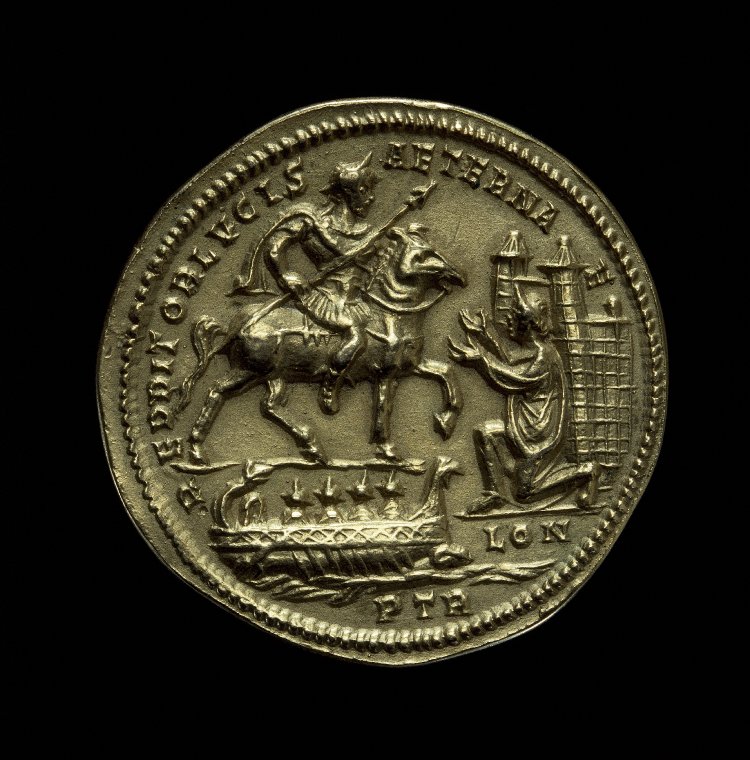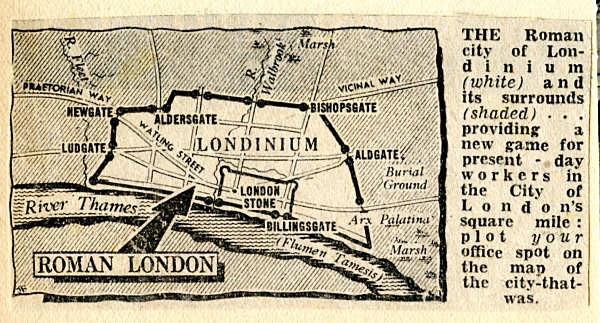Did Normans really build stuff as they say
Normans didn't built Mottes. They really just recycled old pyramids, ie 'burials mounds sometimes without burials..'
Why is the Tower of London, Accidentally depicted in a Roman medal (Arras Treasure Medallion?) from the time of Constantius Chlorus?
Wow, in addition, they didn't build the tower of London Either?!!?!
PROOF: Here is a quote from a book I have recently read, on numismatics: Beginners Guide to Coin Collecting. It's old but good, written by a proper English gent.
"There is a connection between coins and medals going back at least to Roman times. The Romans struck coins which commemorated some particular event or showed some particular person. They were soon striking commemorative medals. One of the most famous formed part of what is known as the Arras Treasure. This famous treasure, which takes its name from the find-spot, contained a large gold medal showing an interesting scene. Constantinus Chlorus is shown on horseback, facing right. Before him is a kneeling figure with arms outstretched. Below the figure is the abbreviation LON, for London. In the foreground a Roman galley filled with soldiers is afloat on the Thames. What has always intrigued the author is the fact that the kneeling figure has almost forecast the appearance of the present tower of London since it bears something of the appearance of the White Tower, which in fact was not built for some centuries to come (c. 1072). Military architecture had not, apparently, changed so much in the interval. The subject of the whole little scene thus commemorated is the entry of Constantius Chlorus into London" (p. 104, Beginner's Guide to Coin Collecting, Howard Linecar.) "
This is the medallion to which Mr Linecar refers:

Ok, let's watch...
How about Arthur's Camelot
Arthur's Camelot. Officially this is Norman, built out of Roman bricks lying around? What's going on here? I think it is just a Roman building that the Normans fixed up a little. I actually asked my history professor if the Colchester Palace/Cathedral could be Roman and he thought it was simply Norman, but obviously built from Roman bricks. (I still think it is Roman).
Normans added at least one tower!
The very first time I visited the place, I realised that it could not be fully 'Norman'. In the following video I suggest a tower was added.
We also discuss a remarkable church in this video, at Bradford on Avon. I think it looks like the senate in Rome! I believe it to be a Roman or at least very early Saxon or Romano-British building. Again they are unwilling to say that the Romans built buildings, destroyed in mega-catastrophes, migrations, etc. They ascribe the same architecture to later peoples. I believe the church at Bradford on Avon was not demolished as it may have been the burial place of Vortigern.
On the below old map of London, we can see that the tower was 'converted' from the Arx Palatina. There was another Arx Palatina on the other side, to intercept people/barbarians sailing down the river from inland! This is now at Blackfriars. I believe this was converted into a monastery, as one can see the same types (or similar) of stone used as in the Tower, in the remaining sections.

At least one of the back towers was added in later times. The Normans repaired and added to a heavily damaged Roman Tower which was built between 250AD and about 300AD, reflecting its late Roman design.
Look at this quote I just found in Gildas, regarding towers built in Southern England! I am unsure if it actually relates to the Roman Tower of London... but it would seem that preventing ships sailing up the Thames would resist a Barbarian attack!
"18... The Romans, therefore, left the country, giving notice that they could no longer be harassed by such laborious expeditions, nor suffer the Roman standards, with so large and brave an army, to be worn out by sea and land by fighting against these un-warlike, plundering vagabonds; but that the islanders, inuring themselves to warlike weapons, and bravely fighting, should valiantly protect their country, their property, wives and children, and, what is dearer than these, their liberty and lives; that they should not suffer their hands to be tied behind their backs by a nation which, unless they were enervated by idleness and sloth, was not more powerful than themselves, but that they should arm those hands with buckler, sword, and spear, ready for the field of battle; and, because they thought this also of advantage to the people they were about to leave, they, with the help of the miserable natives, built a wall different from the former, by public and private contributions, and of the same structure as walls generally, extending in a straight line from sea to sea, between some cities, which, from fear of their enemies, had there by chance been built. They then give energetic counsel to the timorous natives, and leave them patterns by which to manufacture arms. Moreover, on the south coast where their vessels lay, as there was some apprehension lest the barbarians might land, they erected towers at stated intervals, commanding a prospect of the sea; and then left the island never to return."
This sounds a lot like Rome in the time of Aetius, in the 450s. Rome had lost Africa to the Vandals a generation or so earlier and was struggling to maintain the remainder against a horde of barbarians with a much reduced income (only 40,000 pounds of gold per annum), which could only maintain an army at maximum of 30,000 soldiers, far too small. Even so 2/3 of its annual income was required for this! The Western Empire of Aetius and Valentinain could not afford to maintain far-flung Britain, and everyone who wanted a piece of her. In fact, if the London Tower is one of those towers, then the Romans may have left far earlier than is thought! In fact judging by Gildas' various descriptions, it would seem the 'Romans' only arrive when there is trouble, and then leave again.
By this stage, the Roman emperor only wished to reside in Ravenna, not liking the squalor of Rome. I believe the tower possibly went up in the late 200s or the 300s, at about the same time the walls around Chichester. Any later and the Romano-British would have had to have built it for themselves and I am unsure if the economy would have been powerful enough for such an endeavour.